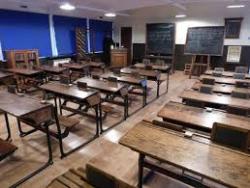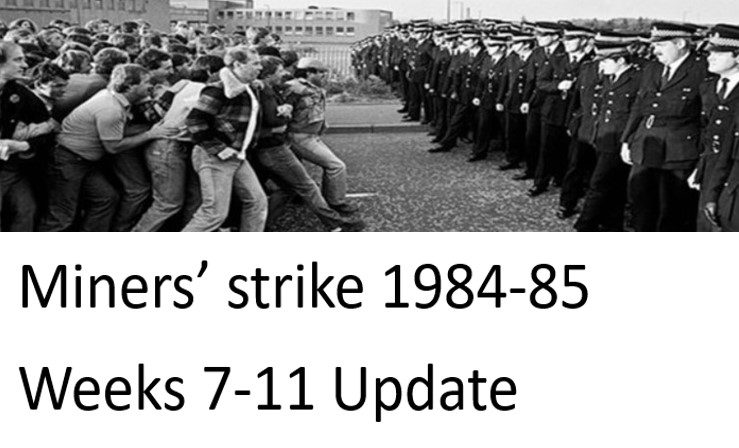By Andy Fenwick, Worcester South LP member
The recent mess that Gavin Williamson created over A-level results and the stress it caused amongst students failing to get university places raises a few questions about education and what its role is in society. If the product of state education has a detrimental effect on the mental health of pupils, then it is not fit for purpose.
Education under capitalism has always been a tool to produce the necessary ‘factory fodder’ to supply the next generation of the workforce. One of the earliest state interventions in education was the 1870 Act and at the time industrialists in support it expressed the view that mass education was vital to the nation’s ability to maintain its lead in manufacturing.
However, it was not until 1890 that education was mandatory for children from five to ten years-old, but even that did not prevent child labour from continuing, with as many as 300,000 children still working in 1901. What was taught then was not only English and basic arithmetic, but a version of History and Geography that fostered support for the British Empire, not forgetting, of course, Religious Instruction, to impose the ideology of ‘obeying your betters’.
Socialist Sunday Schools
For a brief moment in history the Socialist Sunday School Movement, based on the Chartists and socialists offered an alternative curriculum to state schools, and this in a limited way opened up the minds of children to the different possibilities. At its peak there were over 200 such schools throughout Britain.
This radical education provision was another reason for the state to intervene in education, because Socialist Sunday Schools were ‘subverting’ the minds of young people with political and anti-religious doctrines. Steps were taken in many areas to stymie these schools ensure their failure by local authorities refusing rooms and halls to rent.
It was not until the 1918 Education Act, introduced in the context of a radical post-war political wave, that the school leaving age was raised to fourteen, although it still followed the basic Victorian pattern of providing labour to industry. However, a strictly-limited number of working-class youngsters would also get an opportunity to attend a ‘grammar’ school, with its much wider education on offer. For working class families, though, there were many hurdles to jump to get this opportunity for their kids, not least a rigged selection system. Even if academically able, children of working class families were constrained by financial and social factors that meant the opportunity was passed up. In general, the situation made it highly unlikely that kids from the poor end of town would go to grammar school.
During the Second World War, educational opportunities were limited for a lot of evacuee children who were relocated to safer places, but not able to access adequate schooling. Some very young men – and my father-in-law was an example – were taken to serve in the merchant navy even at the young age of 14 years. This was on the dangerous convoys to northern Russia.
For others, however, the war was an education blessing. Whilst other girls of the same age were working in munition factories, we see that Margret Thatcher managed avoid factory or land work and went off instead to Oxford University.
As it was in the First World War, the radical mood of the population demanded improvements in workers’ lives and so the war did produce a new Education Act, the Butler Act, which raised the school leaving age to 15 and allowed for more girls to enter education. In the post Second World War period education boomed with more working class children going to grammar schools – albeit still a minority, with the majority were kept taught in so-called ‘secondary modern’ schools with a secondary standard of education.
Weighted in favour of grammar schools
A system of three different types of secondary schools evolved, allegedly to cater for the needs of all children: grammar, technical and secondary moderns, but there was never an equal amount of finance, with funding per head heavily weighted in favour of the grammar school students. Class sizes in the secondary moderns always maxed at over 30 pupils, and starved of resources these schools were be ‘holding pens’ for teenagers given a basic education fitting them out for industry, until they left at fifteen to take up apprenticeships.
Access to grammar school then was through the hated 11-plus exam system, rigged in favour of middle-class parents who could better prepare their children. Bias was written into the entire process, even where, as in Labour-controlled County Durham, the 11-plus was abolished in favour of a system of teacher-assessment. Three of my four siblings passed the 11-plus in that system, but I was failed by teacher assessment.
Dumped in the lowest stream at school
On my first day at Davy Hall Secondary Modern School, I had my first socialist lesson, when I realised that social background counts; if your daddy was a banker, a doctor or a solicitor you went to the grammar, but if your dad was a chippy on a building site or your single mum was a dinner-lady you went to secondary modern.
A friend of mine, Paul, was dumped in the lowest stream of the secondary school and I use to joke with him that he was well-balanced because he had a chip on both shoulders. But Paul went on to do a PhD in Astrophysics and now lectures in America. He was the exception, but in fact through the secondary modern, second-rate education system, a lot of talent was wasted.
In those days, the path was set well in advance for working class kids. You left school and entered into an apprenticeship. At my school, if you said you wanted to be a welder, the response was that ‘you start at the shipyard on Monday’. In the early 1970s there was manufacturing all around: shipyards, steel plants, chemical works, all employing tens of thousands of skilled trades.
So, even then education fulfilled the need of local industry. Even if you had no qualifications and were expelled from school when you were just fifteen years old, there was always an apprenticeship at Imperial Chemicals Industry (ICI) available.
Education as a gatekeeper
For girls, opportunities were available in what were seen as ‘female’ occupations, so there were opportunities for secretarial course at the local tech college or working as a machine operative at Burtons.
It is here that we see the real nature of the education system as a limiting gatekeeper keeping access to professions to only those 4% of working-class kids managed to get to university. On the other side of the tracks, the majority of privately-educated kids made up the vast majority of university places. The regulatory bodies that limited places at university, particularly those like medical colleges and the law society, still hold enormous influence and therefore recruit students more or less in their own image.
As long as industry existed, with its wide job opportunities, the social divisions created by the education system seemed tolerable. We found work and got on with life. But then along came Thatcher, who destroyed the coal mines shipyards, steel plants, chemical works and the clothing companies, setting Britain up to be a rentier economy with the consequent reduction in job opportunities for working class kids.
Comprehensive secondary education
Starting with the 1964-70 Labour government, but particularly in the 1970s, there was a move towards comprehensive secondary education, merging secondary moderns, technical and grammar schools. This might be seen to have been a progressive move, but privilege remained. Many Tory authorities simply refused to abolish their grammar schools – and successive Labour governments have been too tame to do anything about that – and there was a massive expansion of fee-paying schools, some of which, ironically based on what had previously been grammar schools.
The privilege elite of private schools – bizarrely referred to as ‘public’ schools, although they’re anything but – is still there, with their funding per pupil far higher than state schools and class sizes a third as big. Their pupils are told they are the ‘leaders of the future’ and their expectations are reinforced with a sense of entitlement drummed into them. So even though there has been a big expansion of university places in recent times, we still see the supremacy of one class over another, especially as regards the more prestigious universities.
No more indoctrination
What then would be a socialist education system? First, we would need to end privilege: no more private education and class sizes across all schools reduced to a maximum of 12; no more indoctrination of ideas that cut across proven science. The resources needed to meet the expectations of every child would be met, children could grow up and learn to the best of their ability, in a caring and nurturing environment, and not discarded as failures. From this we would see the flourishing of millions of enquiring minds. Opportunities should not be limited to an elite but the many different and varying routes to lives and careers should be open to all.
We can make a better future for all, because of nature every child is born a socialist
August 24, 2020



